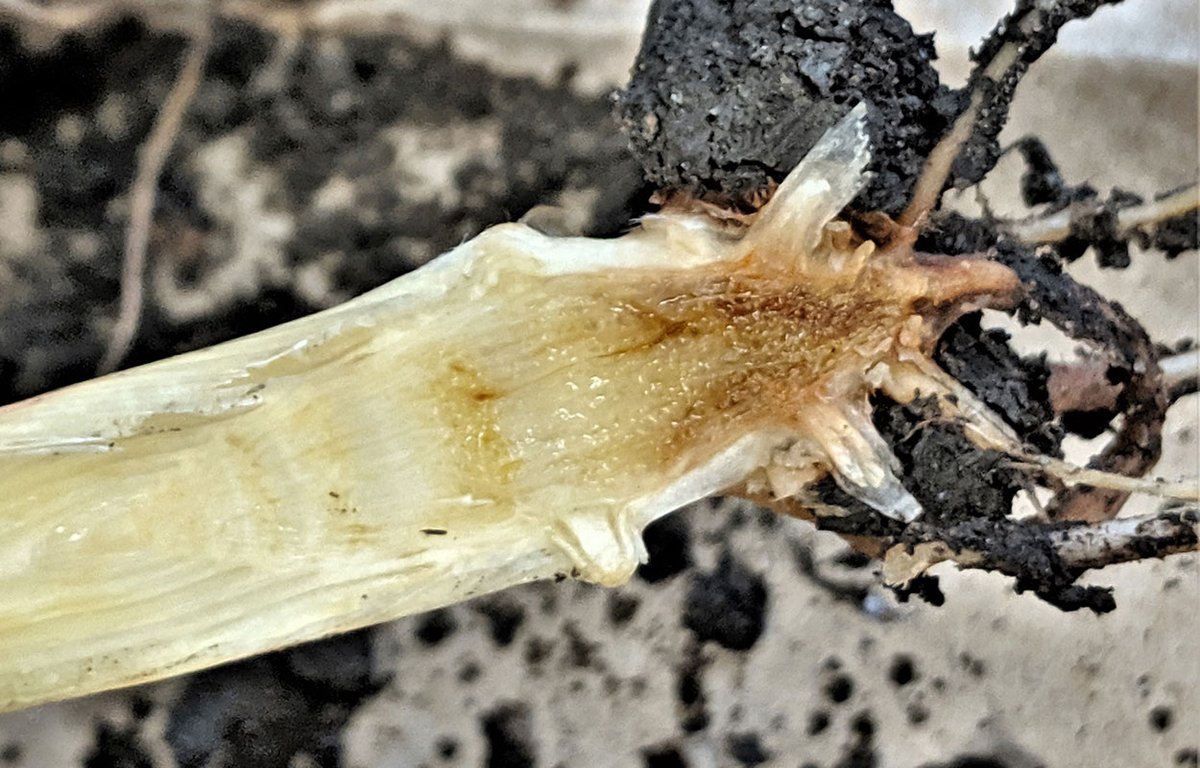
Agronomy consultant to leading ag and food companies – specialty crops, coffee, cacao, agroforestry. @soilsymbiotics & @somafarmgroup
6 subscribers
How to get URL link on X (Twitter) App


 Kremer, a USDA scientist with 32 years of experience, discovered that GMO soybeans and corn consistently harbored 2-10 times more of pathogenic Fusarium fungi on their roots than non-GMO crops.
Kremer, a USDA scientist with 32 years of experience, discovered that GMO soybeans and corn consistently harbored 2-10 times more of pathogenic Fusarium fungi on their roots than non-GMO crops.

 The UK alone saw flying insect populations plummet 63% between 2021 and 2024.
The UK alone saw flying insect populations plummet 63% between 2021 and 2024. 

 Schauberger viewed trees as "powerhouses for transforming energy" that mediate between Earth and cosmic forces.
Schauberger viewed trees as "powerhouses for transforming energy" that mediate between Earth and cosmic forces. 

 This is an extraordinary example of overyielding in complex agroecosystems.
This is an extraordinary example of overyielding in complex agroecosystems.

 The numbers tell a sobering story:
The numbers tell a sobering story: 

 AGRA began in 2006 with bold targets to 2x yields and incomes for 30M smallholder farmers while cutting food insecurity in half by 2020.
AGRA began in 2006 with bold targets to 2x yields and incomes for 30M smallholder farmers while cutting food insecurity in half by 2020. 
 Well-managed grazing dramatically enhances biodiversity, builds healthy, resilient soils, supports water cycles, and contributes to carbon storage both below and above ground.
Well-managed grazing dramatically enhances biodiversity, builds healthy, resilient soils, supports water cycles, and contributes to carbon storage both below and above ground. 
 The human nose can distinguish trillions of different smells with just 400 types of scent receptors working in combination.
The human nose can distinguish trillions of different smells with just 400 types of scent receptors working in combination. 
 Ireland wasn't technologically backward during the famine years.
Ireland wasn't technologically backward during the famine years. 
 Microplastics physically block sunlight on leaf surfaces, disrupt internal nutrient transport pathways, release adsorbed toxins into plant tissues, and induce oxidative stress—collectively degrading photosynthetic efficiency at cellular levels.
Microplastics physically block sunlight on leaf surfaces, disrupt internal nutrient transport pathways, release adsorbed toxins into plant tissues, and induce oxidative stress—collectively degrading photosynthetic efficiency at cellular levels. 

 Fields were analyzed across the agricultural spectrum—from conventional operations to established organic farms.
Fields were analyzed across the agricultural spectrum—from conventional operations to established organic farms. 

 First documented systematically by Louis Kervran, biological transmutation suggests organisms possess biochemical pathways capable of rearranging nucleons at low energy thresholds, effectively converting one element to another through non-nuclear processes.
First documented systematically by Louis Kervran, biological transmutation suggests organisms possess biochemical pathways capable of rearranging nucleons at low energy thresholds, effectively converting one element to another through non-nuclear processes.

 The "potassium paradox" occurs when potassium chloride (KCl) fertilizer triggers soil mechanisms that lock away rather than supply potassium
The "potassium paradox" occurs when potassium chloride (KCl) fertilizer triggers soil mechanisms that lock away rather than supply potassium
 Haber-Bosch wasn't developed to feed populations, it was engineered to manufacture explosives.
Haber-Bosch wasn't developed to feed populations, it was engineered to manufacture explosives. 
 Soil redox potential measures the availability of electrons—essentially quantifying your soil's "electrical charge"—and ranges from highly oxidized (+600 mV) to highly reduced (-300 mV).
Soil redox potential measures the availability of electrons—essentially quantifying your soil's "electrical charge"—and ranges from highly oxidized (+600 mV) to highly reduced (-300 mV). 
 The mechanisms of loss are clear.
The mechanisms of loss are clear. 
 Quorum sensing relies on signaling molecules—like acyl-homoserine lactones (AHLs) in bacteria.
Quorum sensing relies on signaling molecules—like acyl-homoserine lactones (AHLs) in bacteria.
 Glyphosate suppresses beneficial soil bacteria (Pseudomonas, Bacillus) by 40–60% while promoting pathogenic fungi like Fusarium.
Glyphosate suppresses beneficial soil bacteria (Pseudomonas, Bacillus) by 40–60% while promoting pathogenic fungi like Fusarium. 

 In 2009, corporations invested $822M in land grants compared to $645M from USDA
In 2009, corporations invested $822M in land grants compared to $645M from USDA

 The setup was simple but groundbreaking.
The setup was simple but groundbreaking. 
 In studying corn genetics, Goldstein made a revelatory discovery – Modern corn had in large part lost its ability to partner with soil microbes.
In studying corn genetics, Goldstein made a revelatory discovery – Modern corn had in large part lost its ability to partner with soil microbes.